Onboard decision-making record
A&A researchers are the first to meet an elusive NASA requirement of subsecond onboard decisions for planetary landings.
By: Amy Sprague
A&A researchers win AIAA Best Paper Award for an algorithm that finally performs faster than a second, meeting NASA’s requirement for onboard rocket landing guidance.
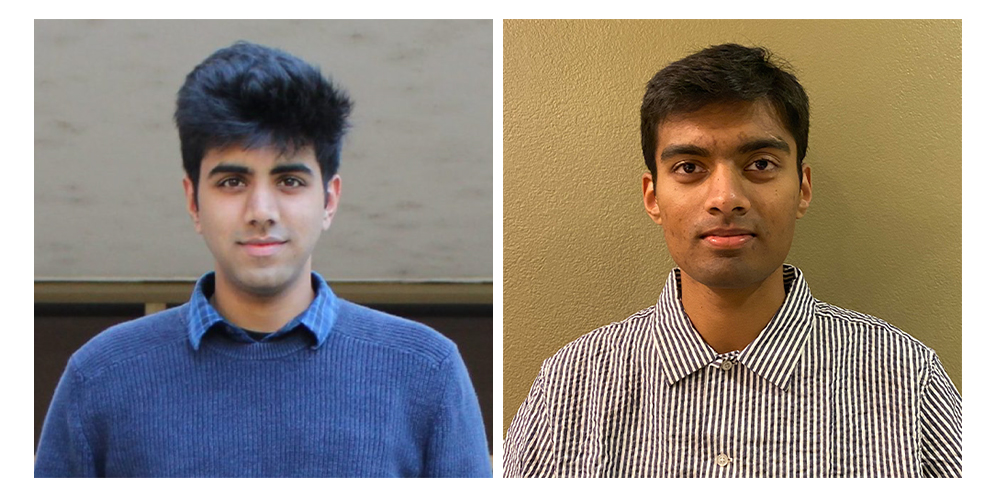
Abhinav Kamath and Purnanand Elango enrolled in our doctoral program and joined the Autonomous Controls Lab (ACL) because they knew A&A researchers have an impressive track record in revolutionizing powered-descent guidance (PDG). And now, under Professor Behçet Açıkmeşe’s guidance and with support from A&A alum Yue Yu, labmates Taewan Kim and Skye Mceowen, Professor Mehran Mesbahi, and John M. Carson III and others from the NASA Johnson Space Center, they have broken a long-standing barrier of the field: executing onboard spacecraft decisions for powered-descent in less than one second. This breakthrough opens up capabilities for precision landing on hazardous terrain. Fittingly, this effort won the 2023 AIAA Guidance, Navigation, and Control Best Paper Award.
The path to here
PDG algorithms generally aim to optimize fuel consumption or the maneuver time while satisfying various constraints. Kamath explains, “In many practical applications, such as the landing of first-stage rocket boosters on Earth (like those of SpaceX, for example), you want to have a PDG algorithm that is both reliable and extremely fast to execute. Really, you want it to run in real-time (typically sub-second) onboard the flight computer, to empower the rocket to autonomously compute its trajectory to the landing site and ensure a safe touchdown.”
He continues, “Real-time performance is necessary because it is nearly impossible to accurately predict the location, speed, and orientation of the rocket at the instant powered-descent needs to be initiated. Further, in the event that a hazard is detected at the original landing site as the rocket descends towards the surface, real-time performance is extremely important to be able to divert to a safer landing site. Onboard computations are also necessary to ensure that potential lapses in wireless communication links between the rocket and the ground station do not lead to mission failure. For Mars landing missions, the only feasible solution is to perform the computations autonomously onboard the rocket system, since two-way communication between Earth and Mars takes several minutes.”
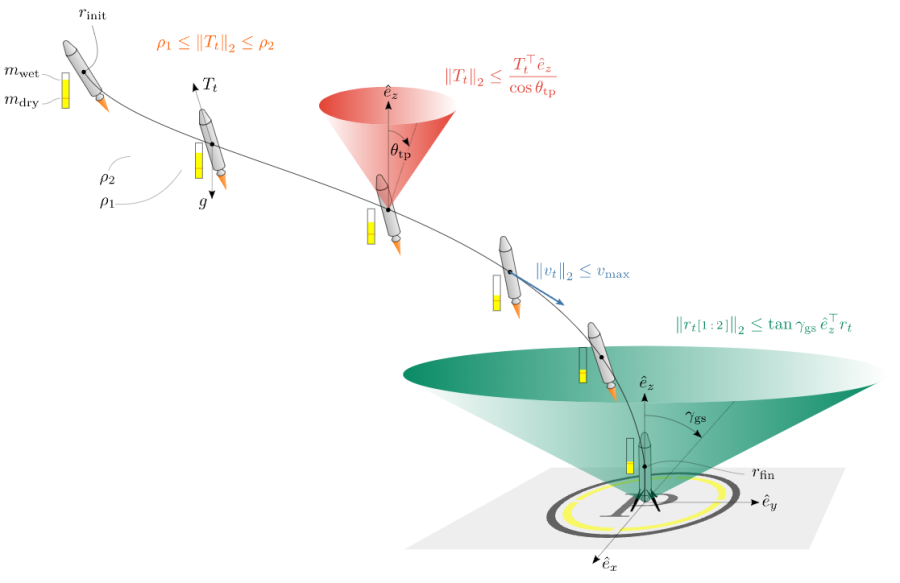
What is powered-descent guidance (PDG)?
Powered-descent guidance refers to the generation of trajectories in terms of position, velocity, attitude, etc, and the corresponding control input signal, like the thrust profile, to feasibly guide a rocket to a target landing site.
2005-2017
3-DoF powered-descent guidance (PDG) using lossless convexification and customized (second-order) interior-point methods (IPMs). This algorithm has been tested in flight (closed-loop).
2020
Dual quaternion-based 6-DoF PDG with state-triggered constraints, using sequential convex programming (SCP) and customized IPMs. This algorithm has been tested in flight (open-loop).
2022
A customized first-order solver, using the proportional-integral projected gradient (PIPG) method, to solve the lossless convexification-based 3-DoF PDG problem.
Early 2023
Multi-phase rocket landing guidance with convex state-triggered constraints, using sequential conic optimization (SeCO) and PIPG.
Late 2023
Dual quaternion-based 6-DoF PDG with state-triggered constraints, using SeCO and customized PIPG. This algorithm is slated for closed-loop flight testing in 2025.

“The most compelling aspect of this research to me is how it encompasses both the layer of high-level trajectory optimization by SCP and that of the low-level convex optimizer by PIPG. It is the effective combination of both layers that I believe is key to break the barrier of 1-second.”
In 2007, Professor Açıkmeşe, then working for the Jet Propulsion Lab (JPL), and his colleagues, proposed an innovative real-time-capable solution using a three-degree-of-freedom (3-DoF) approach based on lossless convexification and convex optimization. 3-DoF accounts for movement along the three axes (translation), but not rotations around the axes (attitude). JPL tested this method as part of their G-FOLD (guidance for fuel-optimal large diverts) flight campaign from 2012-2014.
Meanwhile, Professor Mesbahi and his students were developing real-time optimization techniques for constrained trajectories that involved the orientation of the space vehicle, an effort that can be traced back to his work on the constrained attitude control for the Cassini spacecraft at JPL (1996-1997). In 2017, using this prior work and augmenting constraints on the translational dynamics of the vehicle, led to the development of dual-quaternion trajectory optimization, providing a powerful and flexible approach to impose 6-DoF constraints (incorporating attitude as well as translation) on the space vehicle maneuvers.

Next in 2022, some members of this research team published a novel convex optimization solver based on the proportional-integral projected gradient (PIPG) method. This new approach offers a faster and simpler method to reduce mathematical computations and enable easy verification and validation. This method still ensures that safety-critical applications meet rigorous standards.
Then came the real-time nonconvex optimization framework using sequential convex programming (SCP) and first-order convex optimization. This framework solves multi-phase trajectory optimization problems, incorporating convex state-triggered constraints. The researchers applied this framework to a vehicle like SpaceX’s Starship, showcasing its effectiveness in complex mission profiles.
This video shows a terrestrial Starship landing simulation, for which the guidance problem is formulated as a multi-phase trajectory optimization problem and solved using an in-house-developed real-time nonconvex trajectory optimization framework called sequential conic optimization (SeCO). The guidance algorithm generated the trajectory in a few milliseconds, with the convex optimization solver being ~3x faster than the next fastest off-the-shelf solver. The video compares the A&A SeCO trajectory with the actual footage of the Starship SN10 landing sequence from 2021.

“Sequential convex programming applied to real-world problems has changed the game for trajectory optimization due to its speed and reliability. This work to harness the real-time potential of these algorithms through customization of the solver pushes the limit on what is possible for embedding instantaneous constraint information in the mission planning process.”
Modern planetary landings required a new method

Modern planetary landing missions on unknown surfaces require “terrain-relative navigation” (TRN) and “hazard detection and avoidance” (HDA) executed on-board which requires the spacecraft to create visuals of the surface.
Elango explains, “The 3-DoF approach worked well enough in landing scenarios where precision was not important. But now as we’re trying to land with high accuracy at designated sites with unknown terrain, we are using cameras or LiDAR to focus on the landing sites in real-time to inform the spacecraft about safe regions. This capability requires high-fidelity modeling of the spacecraft’s attitude as well as translation.”
In response to this challenge, then-A&A doctoral students Taylor Reynolds, Michael (Miki) Szmuk, and Danylo Malyuta developed the dual quaternion-based 6-DoF powered-descent guidance (DQG) algorithm with Mesbahi and Açıkmeşe. This algorithm effectively addresses state-triggered constraints and is well-suited for real-time implementation on computationally constrained flight hardware. NASA selected this algorithm for PDG in its SPLICE program.
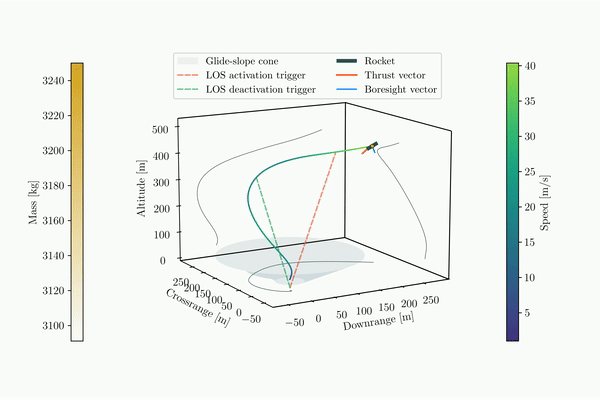
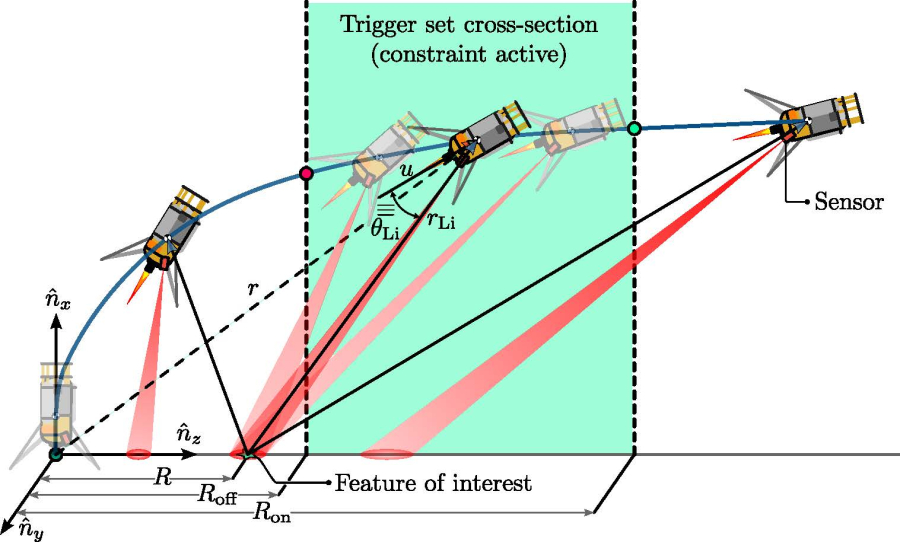
What are state-triggered constraints?
State-triggered constraints are conditional constraints—they are only activated when some specified conditions are met. Typically, such constraints are difficult to impose, but Miki Szmuk and others devised a computationally tractable formulation for them.

“The success of the solver shows how an innovation in mathematical optimization and solutions leads to groundbreaking technologies in space systems. It tells a simple yet powerful message: engineering breakthroughs often come from bridging the gap between theory and application. Contributing to this project is undoubtedly my proudest achievement as an aerospace engineer.”
The award-winning new method for speed and simplicity
With the successful execution of onboard spacecraft decisions in less than one second, we have not only broken the barriers of powered-descent guidance but also paved the way for landing on uncharted celestial bodies. ”
The DQG algorithm demonstrated impressive capabilities, but encountered two major challenges: code size and execution time. The existing NASA solver, also co-developed by A&A researchers, consisted of a large codebase with over 600,000 lines and it was slow to execute on the flight computer, which is far from ideal for real-time safety-critical applications.
To overcome these challenges, our A&A research team, led by Abhi Kamath, developed the sequential conic optimization (SeCO) framework. This innovative framework combines sequential convex programming and first-order conic optimization, eliminating the need for matrix factorizations and inversions. By leveraging the PIPG solver and exploiting the structure of trajectory optimization problems, the SeCO framework achieves significantly faster execution times, and the reliance on simple linear algebra operations reduces code complexity, making it more manageable to verify and validate.
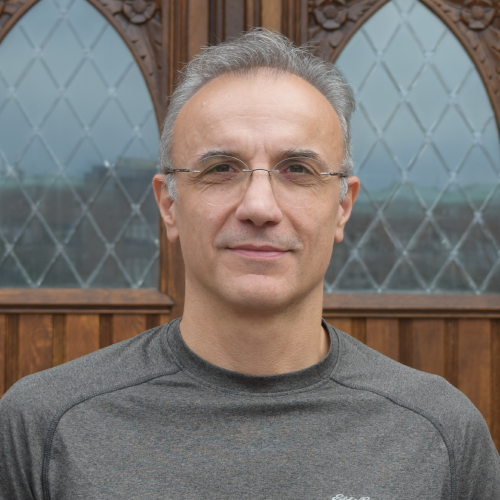
The SeCO solver is capable of solving optimal control problems in milliseconds, surpassing the speed of state-of-the-art solvers. In onboard testing with NASA's SPLICE flight computer, the algorithm broke the long-elusive one-second barrier, meeting NASA’s requirement for real-time precision landing. The reduction in execution time by over 5x and the substantial decrease in code size by two orders of magnitude make the SeCO framework a true game-changer for rocket landing guidance.
NASA plans to conduct flight tests of this algorithm in a closed-loop fashion onboard the Astrobotic/Masten Xogdor rocket in 2025 as part of the SPLICE flight campaign. This will further validate the effectiveness and reliability of the SeCO framework in real-world scenarios.
Of this accomplishment and award, Açıkmeşe says, "With the successful execution of onboard spacecraft decisions in less than one second, we have not only broken the barriers of powered-descent guidance but also paved the way for landing on uncharted celestial bodies. This groundbreaking achievement is a testament to the relentless pursuit of innovation and excellence by our team, and it is an honor to receive the 2023 AIAA Guidance, Navigation, and Control Best Paper Award for our efforts."

“Our ability in formalizing complex constrained guidance problems in six-degrees of freedom, and then solving them using highly efficient algorithms developed by our team, open up an unprecedented capability for the conception, design, and development of current and future lunar and planetary missions. I am so proud of how our UW team has put its significant marks on the development of this critical space systems technology.”
Go to the sources
- Customized Real-Time First-Order Methods for Onboard Dual Quaternion-based 6-DoF Powered-Descent Guidance by Abhinav G. Kamath, Purnanand Elango, Taewan Kim, Skye Mceowen, Yue Yu, John M. Carson III, Mehran Mesbahi, and Behçet Açıkmeşe. AIAA SciTech 2023 Forum [AIAA GNC Best Paper Award].
- Real-Time Sequential Conic Optimization for Multi-Phase Rocket Landing Guidance by Abhinav G. Kamath, Purnanand Elango, Yue Yu, Skye Mceowen, Govind M. Chari, John M. Carson III, and Behçet Açıkmeşe. May 2023.
- A Customized First-Order Solver for Real-Time Powered-Descent Guidance by Purnanand Elango, Abhinav G. Kamath, Mehran Mesbahi, Behçet Açıkmeşe, Yue Yu, and John M. Carson III. AIAA SciTech 2022 Forum.
- Dual Quaternion-Based Powered Descent Guidance with State-Triggered Constraints by Taylor P. Reynolds, Michael Szmuk, Danylo Malyuta, Mehran Mesbahi, Behçet Açıkmeşe and John M. Carson III. Journal of Guidance, Control and Dynamics, Volume 43, Number 9, September 2020.
- Computational Guidance and Control for Aerospace Systems by Taylor P. Reynolds, Ph.D. Dissertation, Department of Aeronautics and Astronautics, University of Washington, 2020.
- Constrained Autonomous Precision Landing via Dual Quaternions and Model Predictive Control by Unisk Lee and Mehran Mesbahi. Journal of Guidance, Control, and Dynamics, Volume 40, Number 2, February 2017.
- Customized Real-Time Interior-Point Methods for Onboard Powered-Descent Guidance by Daniel Dueri, Behçet Açıkmeşe, Daniel P. Scharf and Matthew W. Harris. Journal of Guidance, Control and Dynamics, Volume 40, Number 2, February 2017.
- Convex programming approach to powered descent guidance for mars landing by Behçet Açıkmeşe and Scott R. Ploen. Journal of Guidance, Control and Dynamics, Volume 30, Issue 5, September 2007.